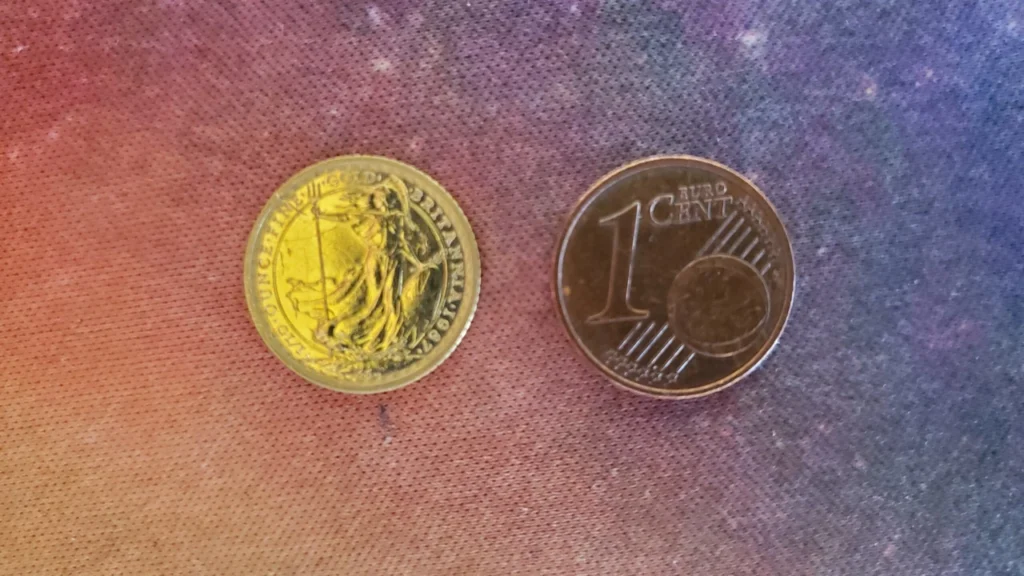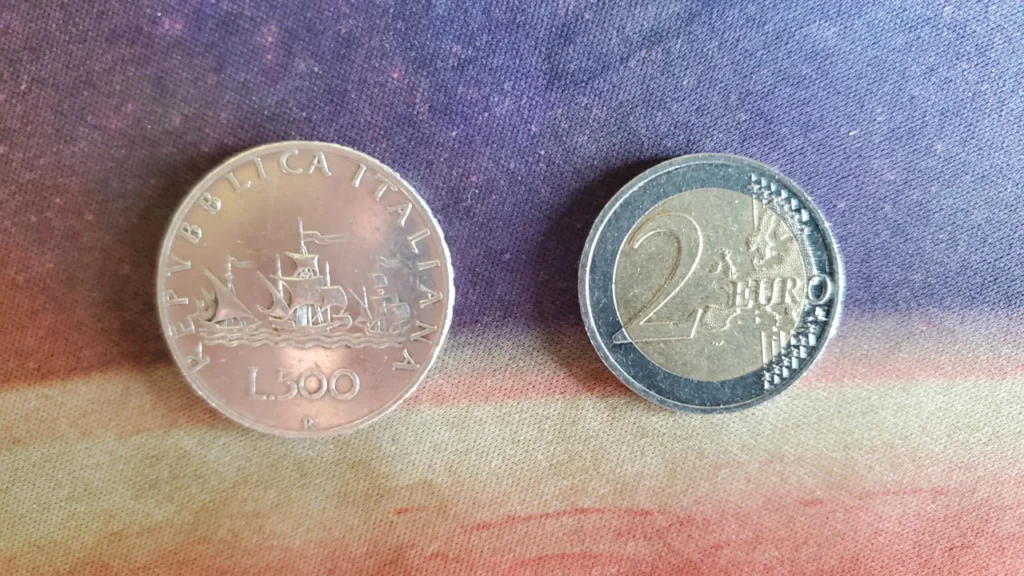In addition to gold coins, silver coins have also played an important role throughout history. Although it is quite rare, it is more abundant, less dense, and more easily mined.
Let’s compare the value density of gold with that of silver and compare the results to get an idea of how the latter might have been a more suitable metal for smaller value transactions.
#1. Value density of gold
Let’s take one of the smallest gold coins we can find, one that is quite well-known, and calculate its current value.

I have chosen for you the Britannia 1/10 oz troy. Those minted from 2013 onwards are 100% pure and therefore 24 carats or 999.9‰.
Let’s calculate its equivalent value:
1 oz = 31.10 g
1/10 oz = 3.11 g
Current market value = 3.11 g * 69 EUR/g = 214 EUR
In reality there are even smaller coins that weigh just over 1 g, such as the Canadian 1/20 oz Maple Leaf, for which we can easily calculate the market value to be around 100 EUR.
We can therefore conclude that paying amounts less than 100 EUR with gold coins is impossible.
Possiamo quindi concludere che pagare importi inferiori ai 100 EUR con monete d’oro è impossibile.
#2. Value density of silver
Let’s now take a fairly well-known, normal-sized silver coin and calculate its current value.

I have chosen for you the 500 lire silver coin that was in circulation decades ago and was used for normal daily payments. The purity is 835‰ and it weighs 11 g.
Let’s calculate its equivalent value:
11 g * 0.835 = 9.18 g (of pure silver)
Current market value = 9.18 g * 0.81 EUR/g = 7.94 EUR
There are also smaller coins and reasoning in proportion with the gold coin above I can safely say that with silver coins it would be possible to pay amounts no less than a few euros.
#3. Final considerations
The aim of this article is not to demonstrate that paying in gold and silver at the cash register could be a practical alternative solution but to demonstrate that the choice to use silver coins for payments would have been necessary also in terms of practicality.
In fact, a gold coin to have the same value as a few euro silver coin would have to be extremely small, making it completely unusable and easy to lose.
For example, the 1/10 oz gold Britannia would have to be almost 27 times smaller (and it is already quite small) to have the same value as the 500 lire silver coin.
In fact, among the common people and for small payments, coins made of so-called “base” or low-value metals such as iron and copper alloys were used. The latter were even less valuable than silver.







Leave a Reply